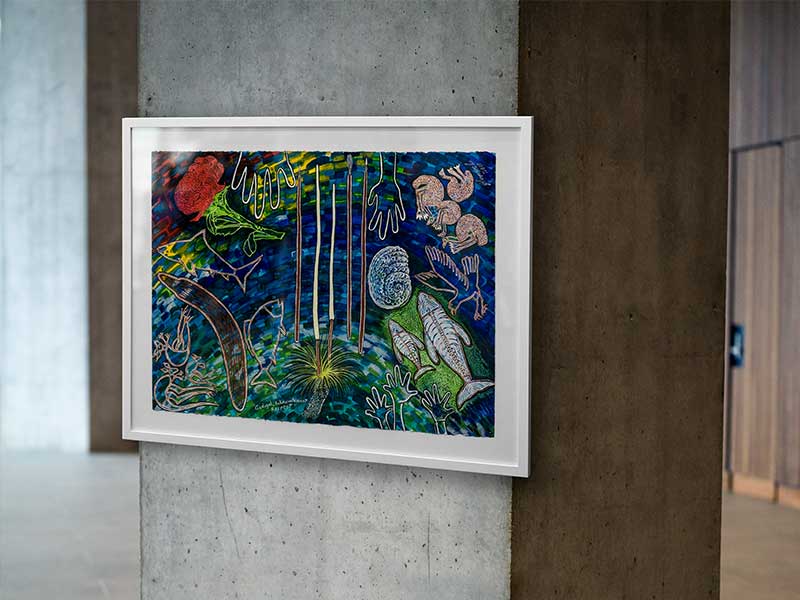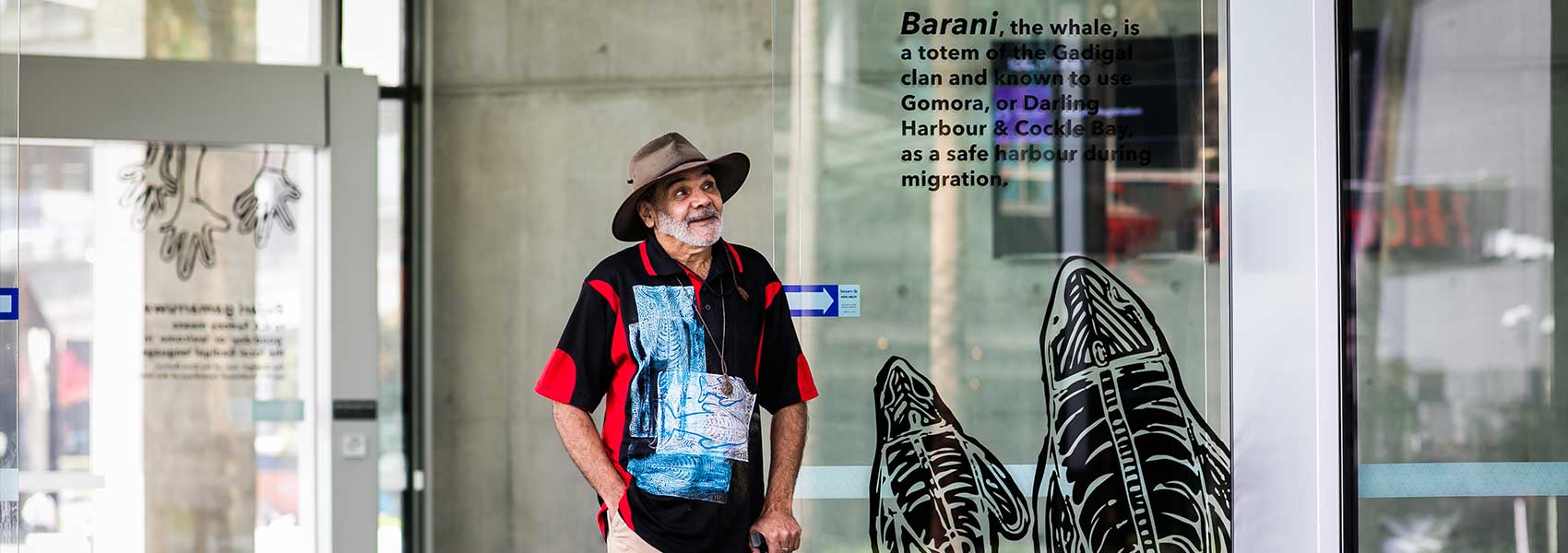
Acknowledging Gadigal culture and tradition
A continued commitment to First Nations storytelling
Written by Vicky Roach
Photography by Guy Wilkinson
When ICC Sydney commissioned Jeffrey Samuels to create a work that reflected Tumbalong and its waterways, the renowned Indigenous artist brought to life some of the animals, plants and shells that would once have been abundant along the shoreline. “First and foremost, we need to recognise that it’s Aboriginal land,” says Bronwyn Bancroft, of the Boomalli Aboriginal Artists Co-operative, who worked closely with ICC Sydney during the development of its Reconciliation Action Plan (RAP). “When someone like Jeffrey creates an image people can relate to, it shines an optical lens onto a different way of seeing, looking and being.”
Samuels’ exuberant colour palette reflects the lushness of the Sydney Basin region itself. “There’s no red rust, which is indicative of both the area and of Jeffrey’s work,” says Bancroft. “It changes people’s impression of Aboriginal art, which is incredibly diverse.”

The whales in Samuels’ painting are also etched, in black vinyl on glass, across the access points to ICC Sydney’s three major buildings—the Convention Centre, the Exhibition Centre and the ICC Sydney Theatre—as part of a welcome to the venue in the local Gadigal language.
They pay homage to the original inhabitants of the area, where a number of ancient rock engravings of the giant marine mammal have been preserved.
“The fact that Jeffrey has been able to connect with the tradition, but contemporise it in terms of the glass imagery, is very special,” says Bancroft. “It’s a very good touchstone for people, but it also gives us back that (cultural) symbolism we crave.”
In 2018, ICC Sydney became the first convention centre in Australia to launch a RAP, formalising its commitment to acknowledging, respecting and celebrating the cultures,
practices and traditions of Australia’s First Nations within the venue and the events it hosts.
The commissioned artwork, titled Gadigal, Acknowledgment Respect, visually represents Indigenous art and culture across the precinct. But as a member of the Stolen Generation, Samuels’ contribution is also personal. “Not only is Jeffrey a consummate draughtsman, but he was taken away from his family at a young age,” says Bancroft. “His pursuit of finding his family is very much akin, to me, to the loss of (biodiversity) in the inner-city region. It’s why he was able to explore that, visually, with such sincerity. You can see that in the work; he reimagines what that space must have looked like before Captain Cook turned up. It’s a gift back to people, in such a prominent Sydney area, to have this fantastic visual moment that has been created by this person whose life has been interrupted, just as much as the Sydney area has been interrupted.”

